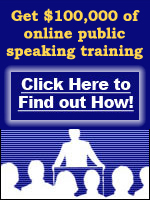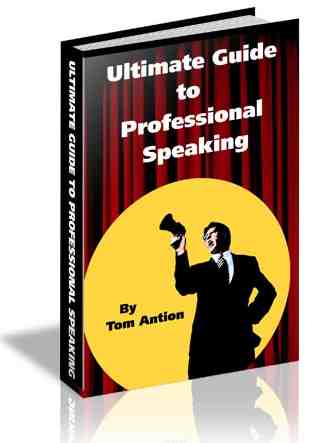I invented the concept of 'Dynamic Range' in public speaking to help you improve your versatility as a business presenter, and to help you pick appropriate audiences for your skill and interest level (Did he say 'pick' my audiences?). Yes, I did say pick your audiences.
Some of you may not have this luxury because you must speak as part of your job, but those of you that do, will move up faster in the speaking world. When you are a beginning public speaker it is important for you to experience different types of audiences just FOR the experience. You will find that you enjoy certain types of audiences more than others, and certain types of audiences enjoy you more too. As you climb the public speaking ladder where the audiences are bigger, or more important to your career, and the stakes are higher, you must learn to just say no.
Most top public speakers don't accept every request to speak even if they are available, and the money is right. They pick their speaking engagements to put themselves in front of audiences whose profiles indicate the greatest chance of success. If you are a highly technical presenter, you would not want to be speaking to a widget sales group at their annual retreat. Conversely, as a really fun retreat facilitator, you would not want to be speaking to a group of radar technicians who are only interested in performance data of the latest missile protection system.
You knowledge of your own Dynamic Range when speaking in public will help you learn to pick your audiences and how to expand your abilities so you are capable of handling a wider range of audiences.
I based the concept of Dynamic Range in public speaking on the same concept that is used to rate stereo equipment. Dynamic range in the electronics world means the ability to reproduce soft sounds as well as loud ones. I have expanded on this to include several other parameters that are important to a speaker. These include:
Serious/Outrageous Content, Slow/Fast Speed of Delivery, Slurred/Articulate Diction, Stationary/Animated Movement, and Audience Needs.
The first step to use this system is to evaluate yourself on each parameter. Many people have trouble with this, so it might be time to call in an objective third party like a coach or other accomplished presenter to watch you present or to review several of your tapes. Try to avoid using friends for this initial evaluation because they will be reluctant to tell you the truth.
Quick Fixes
Here are some ways you can increase your range in a hurry.
If your material is all serious, add some that is lighthearted and vice versa. If you always speak softly, speak loudly sometimes and vice versa. Always work to improve your diction, but allow it to falter in front of less articulate audiences. If you always stand still, move sometimes and vice versa.
If you have the option, pick audiences that give you the greatest chance of success.






